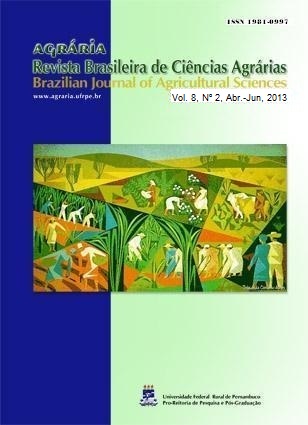Spatial variability of soil resistance to penetration and soil moisture in the area cultivated with sugar cane in the region of Humaitá, Amazonas, Brazil
DOI:
https://doi.org/10.5039/agraria.v8i2a2091Keywords:
physical attributes, water content, geostatisticsAbstract
The mechanical resistance to penetration (RP) is an attribute indicator of compaction was influenced by soil moisture. The objective of this study was to evaluate the spatial variability of soil resistance to penetration and soil moisture on area under cultivation of sugar cane in the region of Humaitá, Amazonas, Brazil. We conducted a sampling grid of 70x70 m where points were scored at regular intervals of 10 m, a total of 64 points. Soil samples were collected at depths of 0.00 to 0.15 m, 0.15 to 0.30 I 0.30 to 0.45 m for determination of soil moisture and soil resistance to penetration in the field. After analysis of these data analyzes were descriptive statistics and geostatistics. We conclude that all the variables studied showed spatial dependence and range values were higher than stipulated by the sampling grid and the RP and soil moisture showed a spatial relationship where lower values of PR concentrated on smaller values of soil moisture.



